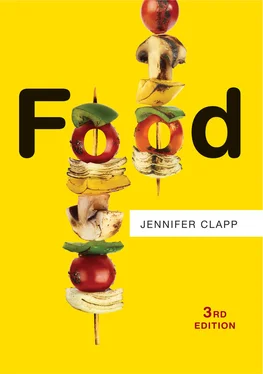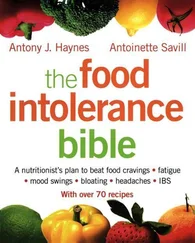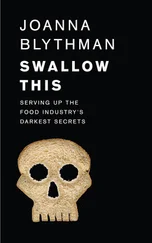The world food economy today is characterized by growing distance, as powerful actors in its middle spaces increasingly treat food like any other commodity, where its profit generating abilities are prioritized over its other essential functions such as nourishment, livelihood, and culture. It is also characterized by asymmetry and volatility, and as a result is susceptible to crises where the world’s poorest and most marginalized people are typically affected the most. Finally, it is also characterized by increasing ecological fragility, putting at risk the very foundation on which food and agriculture is based. These features of the world food economy have not gone unnoticed. Resistance movements that seek to promote alternatives to the current world food economy are on the rise. Although still small in scale compared to the global trend in world food markets, these movements signal a momentous shift in thinking on a broad scale about the implications of the food we eat every day.
Before providing a more detailed overview of the key forces that shape the world food economy, it is important first to outline some of its basic facts and features. Most estimates put global food sales at around US$8.7 trillion in 2018. The world market for food, in other words, is huge. Indeed, the food and agriculture sector accounts for some 10 percent of global GDP (which was approximately US$80 trillion in 2018) and around one third of the world’s active workforce depends on it for their livelihood. The weight of agriculture in national economies varies widely between countries, however. In developing countries as a whole, agriculture accounts for around 10 percent of GDP. In poorer agriculture-based developing countries, it accounts for a much higher proportion of GDP, often over 30 percent and as much as 50 percent or higher for some countries, such as Sierra Leone or Chad. In these poorer agriculture-based economies, most of which are in sub-Saharan Africa, typically over 60 percent of the population is engaged in agriculture as part of their livelihood. This contrasts sharply with industrialized countries where agriculture averages less than two percent of GDP, with the percentage of the population working in the sector averaging around three percent. Again there is variation, with agriculture accounting for less than one percent of GDP in Germany, for example, and three percent in Australia. 5
Throughout history, world food markets have had an international dimension to them. Salt, sugar, and spices have been traded over long distances for centuries. Colonial powers invested in plantation agriculture for certain key crops – such as sugar, coffee, tea, and tropical fruits – in their colonies, and established international trade routes for food and agriculture items in the 1800s – mainly as imports to wealthy nations. In some cases, such as the United Kingdom (as is discussed in more depth in Chapter 2), the import of food items from the colonies provided an important source of its calories, particularly as the country industrialized and needed to feed an expanding urban population with affordable grains and other foodstuffs.
After the Second World War, the United States sought to dominate international food trade flows as a major exporter of food to countries around the world that were short of sufficient food supplies. As Chapter 2outlines, the United States sought to export its agricultural surpluses to Europe and then to Africa, Asia, and Latin America in this period, a practice followed by other countries that grew surplus food, including Canada, Australia, and eventually Europe once it recovered from the war. The globalization of the food system began to intensify in the post-war period, with recent decades seeing particularly heightened global integration including trade within and among major agrifood companies.
The total volume and value of agrifood trade has increased dramatically in the past thirty years. Agricultural trade as a percentage of total trade in goods and services has declined from around 20 percent in 1980 to around 10 percent today, but this is largely because trade in other items has grown more than trade in agricultural products. Food trade, however, has grown significantly in absolute terms, from around US$315 billion in 1990 to approximately US$1.5 trillion in 2017, experiencing a nine percent increase in 2017 alone. Food trade has also grown faster than food production in recent years, signaling the increased importance of global markets in the food system. 6
The share of agricultural production that is exported varies by country and by crop. The United States, for example, exports about half of its wheat and rice production and Canada exports three quarters of the wheat and 90 percent of the canola it produces. While overall rich industrialized countries tend to export a high proportion of their agricultural production, some less industrialized countries also export significant amounts of the crops they grow. Latin American countries, for example, export around a quarter of their agricultural production. This compares with Asia, which exports around six percent of its agricultural production. These figures, however, mask wide variation and the fact that some countries rely heavily on agricultural exports for their income. Although agricultural exports average around 10 percent of all exports, in many developing countries agriculture makes up a very large percentage of total exports. In 2017, for example, 94 percent of Guinea-Bissau’s exports, 64 percent of the Central African Republic’s exports, and 49 percent of Nicaragua’s exports were agricultural products. Some rich industrialized countries are also heavily dependent on agricultural exports, such as New Zealand, where around 70 percent of all exports are agricultural products. 7
A particularly high percentage of some key commodities enter world markets, and some countries rely heavily on a single commodity for most of their agricultural exports. According to the FAO, over forty developing countries are dependent on a single agricultural product for over 20 percent of their total exports, with the crops that they are dependent on typically being coffee, cocoa, sugar, and bananas. For these crops, a very high percentage of global production is traded internationally, with around 80 percent of coffee, 70 percent of cocoa, 30 percent of sugar, and 18 percent of bananas entering world markets. Palm oil is also a highly traded agricultural commodity, with over 70 percent of production entering world markets. Just two countries – Indonesia and Malaysia – account for around 85 percent of all palm oil production. It is not just tropical crops that see a high percentage of production enter world markets. The export share of wheat is around 25 percent globally and for soy it is approximately 40 percent. 8
At the same time that food and agriculture exports are growing, so are imports, particularly in developing countries, as will be discussed in more detail in Chapter 3. The least developed countries as a group, for example, were net agricultural exporters in the 1960s, but are now net agricultural importers. Between 2000 and 2015, this group of countries saw their agricultural import bill increase from US$2.5 billion to around US$33 billion, while their agricultural exports lagged behind, leaving them with an agricultural trade deficit of around US$15 billion. African countries in particular have become dependent on food imports, especially cereals, in recent decades. 9
Foreign direct investment (FDI) by transnational corporations has also intensified in the food and agriculture sector, serving as another indicator of the extent to which this market has become more global in recent years. FDI inflows in the food and beverage sector, for example, increased from approximately US$7 billion per year in the 1989–1991 period to US$35 billion in 2009, reflecting increased investment in the aftermath of the 2007–2008 food price crisis. FDI in the sector dropped to around US$20 billion in 2014, and then rose back up to US$30 billion in 2017. In some sectors of the food industry, just a few TNCs dominate production and trade, as is the case with some highly traded commodities such as grains, coffee, cocoa, and bananas. Investment by agricultural input corporations has also been on the rise, with growing market concentration in the seeds and agrochemicals industries, as well as the retail food sector, as will be discussed more fully in Chapter 4. 10
Читать дальше












